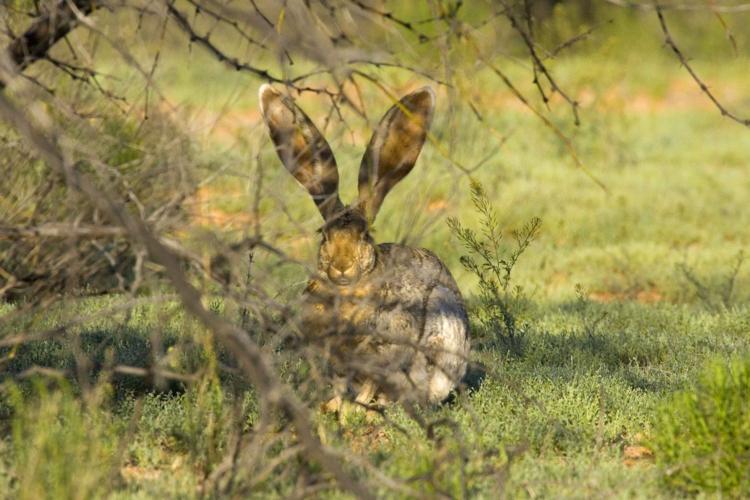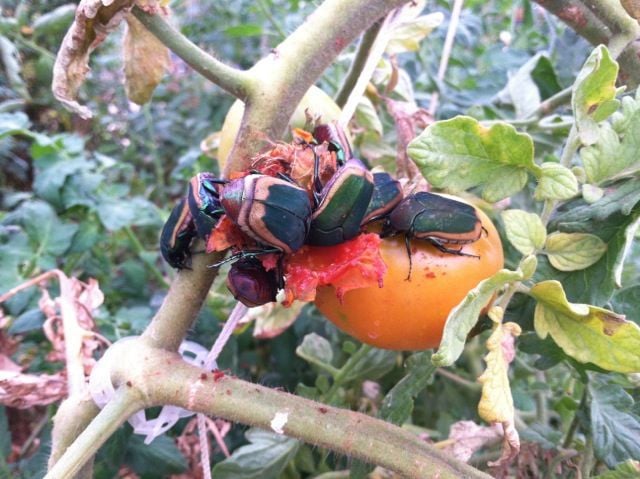Q: I see these red bugs on the new growth of my Texas mountain laurel. It did not bloom last year and it was suggested that I am not watering enough. So I have been and now I have these guys. I don’t know if you can see in the picture but there is clear sap all around as well. I am thinking these are not beneficial? What should I do? They appear to be doing a lot of damage to new growth, so I am going to use a soap mixture to deal with them.
A: These red bugs (Lopidea major), also known as the sophora plant bug or mountain laurel bug, are relatively harmless although not beneficial. They will suck some sap and do minor aesthetic damage to the new growth for a short time in the spring.
They will not do enough damage to justify spending time and money managing them. Insecticidal soap is a good solution as an irritant for small soft-bodied insects and may disrupt their feeding activity. If your soap solution doesn’t work as you hope and you are determined to manage them, you might try an organic pyrethroid product called Pyganic that is more effective against plant bugs of this order.
Q: My grape arbors are full of these bugs — hundreds of them eating my figs and grapes. I’ve never seen anything like this before. I shake the grape arbors and swarms fly out. Is there something we can do? Help! Attack of the June bugs!
A: They are sometimes called June bugs based on the time of year we see them. Today they are called March bugs. They are also called fig beetles (Cotinis mutabilis) and their white grubs are often found in the soil as people prepare their garden beds for planting.
As adults, they can be managed with conventional insecticides, assuming this is not an organic operation. There are a variety of insecticides that work well and are labeled for use on grapes and figs. The problem is the beetles can fly and when there are large numbers of them it requires repeat treatments. So you can’t really stop them, you can only hope to contain them.
There aren’t any great organic solutions for the adults unless you count the two-brick method. Insecticides should not be sprayed while plants are blooming to conserve our valuable pollinators.
Q: I know this is kind of a stretch, but I got your email off an answered question about caring for a cactus on a website. I bought a cactus in Japan (I’m stationed over here) and I have a couple questions. First is it normal to have that discoloration around the base and arms? Also, what kind of cactus is this? I just want to make sure I’m doing everything for it so it can survive!
A: Your plant is a type of Euphorbia. These plants are in the Euphorbiaceae family rather than the cactus family Cactaceae. They are often confused for cacti due to the spines and general appearance. The browning is a function of age and not anything wrong with the plant. Caring for this plant is similar to what you would do for cacti. Make sure it is in well-drained soil and water once a month if kept indoors in a container. The hot desert sun would be too much and I would recommend indirect sunlight, but in other locations where it’s not so hot make sure it gets plenty of sun. A water-soluble complete fertilizer can be used at a quarter strength monthly during the growing season. Avoid fertilizers that are high in nitrogen.
Q: We moved into our home in 1970, and there was a small grapefruit tree growing in the back yard. We don’t know how old the tree is, but it is healthy and always produces hundreds of delicious grapefruit every year. Today I noticed that a cottontail rabbit was under the tree eating some of the leaves. There are a lot of cottontails in our neighborhood, but I didn’t know that they eat grapefruit leaves.
In the summer I always see a few damaged leaves in different places in the tree, but I thought that was caused by a leafcutter.
My question is: what can I do to keep rabbits from eating the leaves?
A: Fencing is really the only prevention for keeping rabbits and other four-legged creatures away from desirable plants. If that isn’t an option you might consider doing nothing.
Since your tree seems to be doing fine producing so much fruit and because rabbits can’t climb trees, I recommend letting them eat the low hanging leaves. Most plants can tolerate some defoliation. They can still remain healthy and produce flowers and fruit. I would say the same thing about leaf-cutter bees. They only cause cosmetic damage to the tree.






